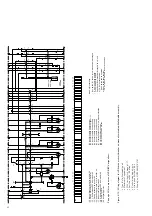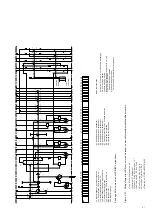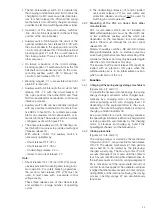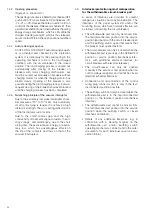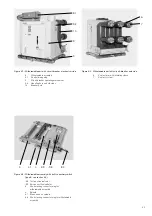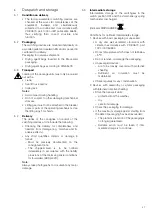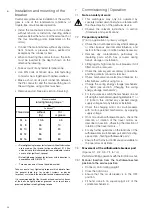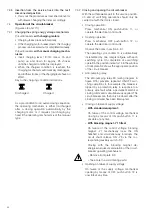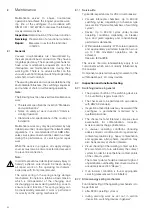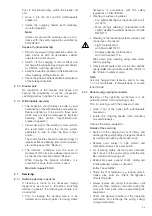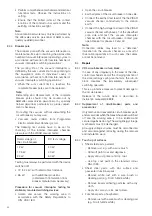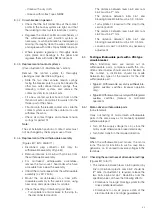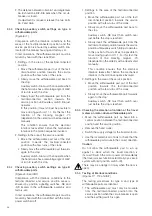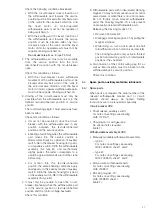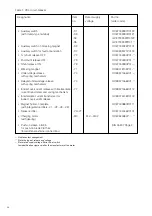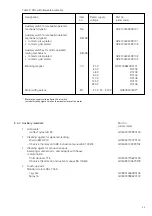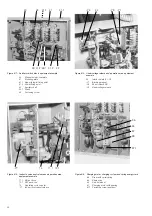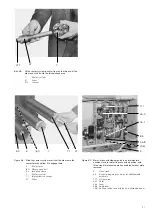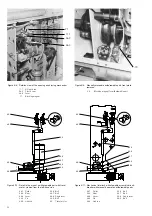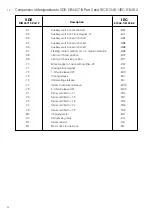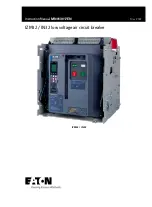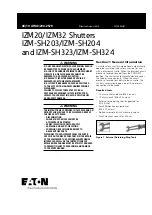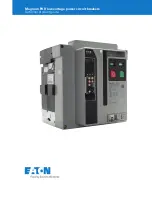
44
• Perform comprehensive mechanical and electrical
functional tests. Observe the instructions on
setting.
• Ensure that the bolted joints at the contact
locations of the conductor bar system and the
earthing connections are tight.
Note:
Above mentioned work may only be performed by
the after-sales service personnel of ABB or ade-
quately qualified personnel.
8.3.3
Breaker pole
The breaker pole with the vacuum interrupter is
maintenance-free up to reaching the permissible
number of vacuum interrupter operating cycles in
accordance with section „Permissible number of
vacuum interrupter switching operations“.
The working life of the vacuum interrupter is
defined by the sum current limit corresponding to
the equipment data in individual cases in
accordance with section „Permissible number of
vacuum interrupter switching operations“:
• When the sum current limit is reached, the
complete breaker poles are to be replaced.
Note:
Dismantling and Replacement of the complete
breaker poles should only be carried out by
ABB after-sales service personnel or by specially
trained personnel, particularly as proper adjust-
ment is necessary.
For testing the vacuum without dismantling the
circuit-breaker you may use:
• Vaccuum tester VIDAR, from Programma
Electric GmbH, Bad Homberg v.d.H.
The following test values have to be set for
checking of the internal interrupter chamber
pressure with the VIDAR vacuum tester:
Rated voltage of
DC test voltage
the circuit-breaker
12 kV
40 kV
17.5 kV
40 kV
24 kV
60 kV
Testing must always be performed with the device
switched off:
• 12 to 24 kV: with rated contact distance
• 36 kV:
with additional provisions
(obtainment of information from
breaker manufacturer necessary)
Procedure for vacuum interrupter testing for
stationary mounted switching devices:
• Isolate and secure the working area in
accordance with the Safety Regulations to
DIN VDE / IEC.
• Open the circuit-breaker.
• Earth all poles of the circuit-breaker on one side.
• Connect the earthed test lead of the the VIDAR
vacuum checker conductively to the station
earth.
• Connect the high voltage test lead of the VIDAR
vacuum checker with phase L1 of the unearthed
pole side and test the vacuum interrupter
chamber with the circuit-breaker contact gap
open. Repeat for phases L2 and L3.
Note:
Connected cables may lead to a “detective“
indication on the vacuum checker as a result of
their cable capacitance. In such cases, the cables
are not be removed.
8.4
Repair
8.4.1
VD4 circuit-breaker run-on block
In case of any irregularity in the area of the inner
control mechanism and of the charging function of
the stored-energy spring mechanism, the run-on
block disables the immediately subsequent
switching operation.
This is a protective measure to prevent damage to
the circuit-breaker
Release of the run-on block is described in
instruction manual BA 383/E.
8.4.2
Replacement of circuit-breaker parts and
accessories
Only remove and reassemble circuit-breaker parts
and accessories when the breaker has been switched
off and the working area is to be isolated and
secured against reclosing. The spring energy storage
mechanism must be discharged.
All supply voltage sources must be disconnected
and secured against reclosing during the removal
and installation work.
8.4.3
Touch up of surfaces
• Sheet steel parts, painted:
– Remove rust, e.g. with a wire brush.
– Grind off paint coat and degrease.
– Apply anti-rust primer and top coat.
– Use top coat paint in the standard colour
RAL 7035.
• Sheet steel parts, with zinc surface and
passivated functional parts:
– Remove white rust with a wire brush or
cleaning pad (e.g. Scotch-Brite white).
– Remove loosely adhering particles with a dry
cloth.
– Apply zinc spray or zinc dust primer.
• Functional parts, phosphated:
– Remove rust with a wire brush or cleaning pad
(e.g. Scotch-Brite white).

